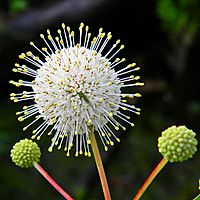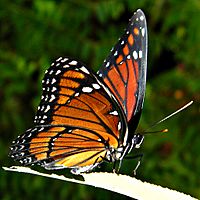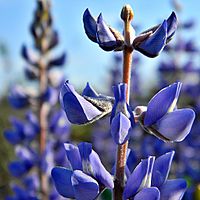Juno Dunes Natural Area facts for kids
The Juno Dunes Natural Area is a special place in Palm Beach County, Florida. It's a large nature preserve and park, covering about 576 acres (233 hectares). This area helps protect important natural habitats and wildlife. It's a great spot for people to explore and learn about Florida's unique environment.
Contents
Where is Juno Dunes Located?
Juno Dunes Natural Area is found at 14200 U.S. Highway 1. It is very close to the town of Juno Beach. If you are looking for the west part of the preserve, its entrance is on the west side of U.S. Highway 1. It's about half a mile north of Donald Ross Road.
This natural area stretches from the Atlantic Ocean all the way to the Intracoastal Waterway. It also sits right next to Loggerhead Park. This location means it has a mix of different landscapes, from sandy beaches to coastal forests.
Exploring the Habitats of Juno Dunes
Juno Dunes Natural Area is home to many different natural environments, called habitats. These habitats provide homes for a variety of plants and animals. Let's explore some of the main ones you can find here:
Florida Scrub Habitat
- Florida scrub is a unique habitat found only in Florida.
- It has sandy soil and plants that are tough and can handle dry conditions.
- You might see scrub oaks and other small, hardy shrubs here.
- Many rare animals, like the Florida scrub-jay, depend on this habitat.
Beach and Dune Ecosystems
- The preserve includes beautiful beaches and sand dunes.
- Dunes are hills of sand formed by the wind.
- They help protect the land from storms and erosion.
- Special plants grow on the dunes, helping to hold the sand in place.
- Sea turtles often nest on these beaches during certain times of the year.
Coastal Strand and Maritime Hammock
- The coastal strand is a narrow strip of land behind the dunes.
- It has plants that can tolerate salt spray from the ocean.
- A maritime hammock is a type of forest found near the coast.
- These hammocks are usually on slightly higher ground.
- They have taller trees that provide shade and shelter for wildlife.
Freshwater Wetlands
- Juno Dunes also has freshwater wetlands.
- These are areas where the land is covered by water for part of the year.
- Wetlands are very important for many animals, including birds, frogs, and insects.
- They also help filter water and prevent floods.
- You might spot wading birds like herons or egrets in these areas.
Juno Dunes Natural Area is a fantastic place to see Florida's natural beauty. It's a reminder of how important it is to protect these special environments for future generations.




